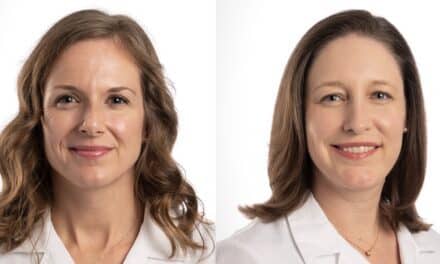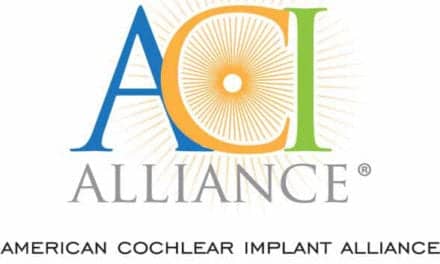Approximately 1 to 3 per 1000 children are born with atypical hearing thresholds, and similar numbers of children become deaf or hard of hearing later in childhood. All benefit from receiving medical support as early as possible, especially between birth and 5 years of age, a critical time of brain development and language acquisition, according to the American Academy of Pediatrics. This is why the AAP has issued new guidance on pediatric hearing assessment.
The AAP, in a clinical report, “Hearing Assessment in Infants, Children, and Adolescents: Recommendations Beyond Neonatal Screening,” for the first time since 2009 has updated its recommendations on risk assessment, terminology, and other considerations for children who are deaf or hard of hearing. The clinical report is published in the September 2023 Pediatrics.
Policy statements created by AAP are written by medical experts, reflect the latest evidence in the field, and go through several rounds of peer review before being approved by the AAP Board of Directors and published in Pediatrics.
“Parents and caregivers are often the first to realize their child is experiencing a change in hearing level,” says Charles Bower, MD, FAAP, lead author of the report, produced by the AAP Committee on Practice and Ambulatory Medicine and Section on Otolaryngology – Head and Neck Surgery. “Sometimes this may appear as a child’s inattention or erratic responses to sound. It’s important to bring this up with the pediatrician, even if the child passed a newborn hearing screen after birth.”
Genetic causes that impact hearing may show up beyond the newborn period, according to the report. Congenital cytomegalovirus (cCMV) infection is the most common infectious cause of childhood sensorineural hearing change and accounts for 25% of deaf and hard of hearing children ages 4 years old. Other infectious diseases, especially meningitis and otitis media, are leading causes of a change in hearing.
Delayed identification of changes in hearing status during early childhood and lack of timely or adequate support for language access often result in delayed development and permanent deficits. The report covering guidance for pediatric hearing assessment also notes potential impacts on sequential memory, abstract thinking, and executive function, poor academic performance, personal-social maladjustments, and emotional difficulties.
The AAP recommends:
- All children should undergo an objective, evidence-based risk assessment for changes in hearing thresholds.
- Children at all ages should have prompt objective hearing screening if there is either clinical concern or caregiver concern of permanent or ongoing hearing change.
- A child with a positive screen for atypical hearing thresholds in one or both ears should be referred to an audiologist for diagnostic consultation and testing.
- Behavioral audiometry may be impossible or inaccurate for some children with developmental or behavioral health conditions. In this situation, referral to audiology for electrophysiological hearing testing using auditory brainstem response (ABR) with sedation may be more appropriate.
- Newborn and childhood hearing screening results should be reviewed with families and documented to facilitate tracking and follow-up.
- To prevent false negative results, and to avoid delays in identification, access to language, and support, screening tests should not be repeated more than once before referral to audiology for consultation and further testing.
- If comprehensive audiologic evaluation identified the child as deaf or hard of hearing, discuss the importance of supporting the child’s communication, language development, and socioemotional needs within the family and school settings.
The AAP also observes the clinical report no longer contains deficit-framing terminology, such as “loss,” “failed” or “impairment,” to reflect that children who are deaf or hard of hearing are equal, healthy, and whole. The report is informed by published materials and engagement with Deaf and Hard of Hearing professionals and partner organizations, such as the National Association of the Deaf, working with the AAP Early Hearing Detection and Intervention program.
In the report on guidance for pediatric hearing assessment, the capitalized term “Deaf” refers to the community of individuals who identify with the culture of deaf people that has been historically created and actively transmitted across generations. The terms “deaf” and “hard of hearing” are audiological designations. Culture and personal experiences will likely influence the degree of medical intervention that family members desire.
“Most important is developing a rapport of trust and respect for our families’ lived experiences, expertise and cultural perspectives,” Bower says. “We share a common goal of making sure every child lives their healthiest life possible.”
The American Academy of Pediatrics is an organization of 67,000 primary care pediatricians, pediatric medical subspecialists and pediatric surgical specialists dedicated to the health, safety and well-being of infants, children, adolescents, and young adults.





